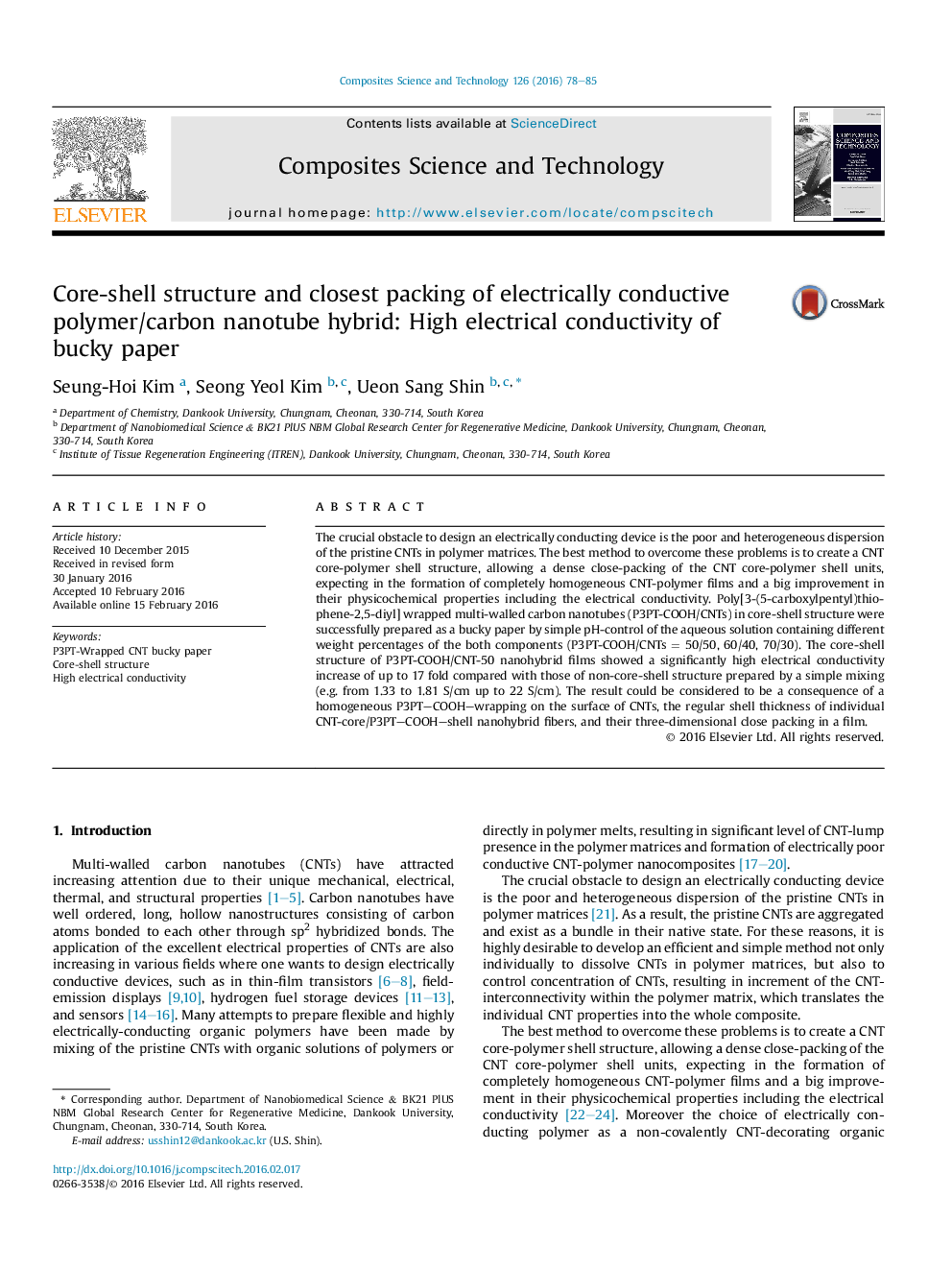| Article ID | Journal | Published Year | Pages | File Type |
|---|---|---|---|---|
| 819992 | Composites Science and Technology | 2016 | 8 Pages |
Abstract
The crucial obstacle to design an electrically conducting device is the poor and heterogeneous dispersion of the pristine CNTs in polymer matrices. The best method to overcome these problems is to create a CNT core-polymer shell structure, allowing a dense close-packing of the CNT core-polymer shell units, expecting in the formation of completely homogeneous CNT-polymer films and a big improvement in their physicochemical properties including the electrical conductivity. Poly[3-(5-carboxylpentyl)thiophene-2,5-diyl] wrapped multi-walled carbon nanotubes (P3PT-COOH/CNTs) in core-shell structure were successfully prepared as a bucky paper by simple pH-control of the aqueous solution containing different weight percentages of the both components (P3PT-COOH/CNTs = 50/50, 60/40, 70/30). The core-shell structure of P3PT-COOH/CNT-50 nanohybrid films showed a significantly high electrical conductivity increase of up to 17 fold compared with those of non-core-shell structure prepared by a simple mixing (e.g. from 1.33 to 1.81 S/cm up to 22 S/cm). The result could be considered to be a consequence of a homogeneous P3PT-COOH-wrapping on the surface of CNTs, the regular shell thickness of individual CNT-core/P3PT-COOH-shell nanohybrid fibers, and their three-dimensional close packing in a film.
Related Topics
Physical Sciences and Engineering
Engineering
Engineering (General)
Authors
Seung-Hoi Kim, Seong Yeol Kim, Ueon Sang Shin,
